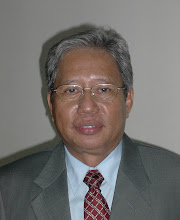Water levels in the northern Mekong River are at record-low levels, posing a thread to water supply, navigation and irrigation along the stretch of water that is home to about 60 million peoples. Jeremy Bird, chief executive officer of the Mekong River Commission (MRC) Secretariat, told AFP that in this late February 2010, northen Thailand, northen Laos, and southern China have been affected by the low water, that are lower than the last 20 years records.
Bird said that it is difficult to say whether global warming is responsible but the wet season in Vientiane last year was one of the worst on record, and was followed by much lower than average rain late in 2009 and early this year.
There are eight existing or planned dams on the main stream Mekong in China, which are normally filled during the dry season, with whatever rain that fall during that season.
More information can be get from the Mekong River Commission website at http://www.mrcmekong.org/
Low water level record was continue ocurring, and it was reported by Tran Dinh Thanh Lam, as presented in the Borneo Post March 25,2010, that salinisation threathens crops in the Mekong Delta. The Mekong Delta is Vietnam's rice bowl, producing half of its annual rice output. In the last decade, the dry season seems to have been coming earlier each year, and then last longer. The salt water from South China sea intruded to the Delta during this prolong dry spell, as far as 30 km inland.
Many suspect that dams that built by China, on the Mekong river upstream have contributed to the lower water level downstream. However, a top official from China is quoted saying they were not to be blame for the water level low record in the waterway, where more water infrastructure are still need to be built.
Bird said that it is difficult to say whether global warming is responsible but the wet season in Vientiane last year was one of the worst on record, and was followed by much lower than average rain late in 2009 and early this year.
There are eight existing or planned dams on the main stream Mekong in China, which are normally filled during the dry season, with whatever rain that fall during that season.
More information can be get from the Mekong River Commission website at http://www.mrcmekong.org/
Low water level record was continue ocurring, and it was reported by Tran Dinh Thanh Lam, as presented in the Borneo Post March 25,2010, that salinisation threathens crops in the Mekong Delta. The Mekong Delta is Vietnam's rice bowl, producing half of its annual rice output. In the last decade, the dry season seems to have been coming earlier each year, and then last longer. The salt water from South China sea intruded to the Delta during this prolong dry spell, as far as 30 km inland.
Many suspect that dams that built by China, on the Mekong river upstream have contributed to the lower water level downstream. However, a top official from China is quoted saying they were not to be blame for the water level low record in the waterway, where more water infrastructure are still need to be built.

Comments